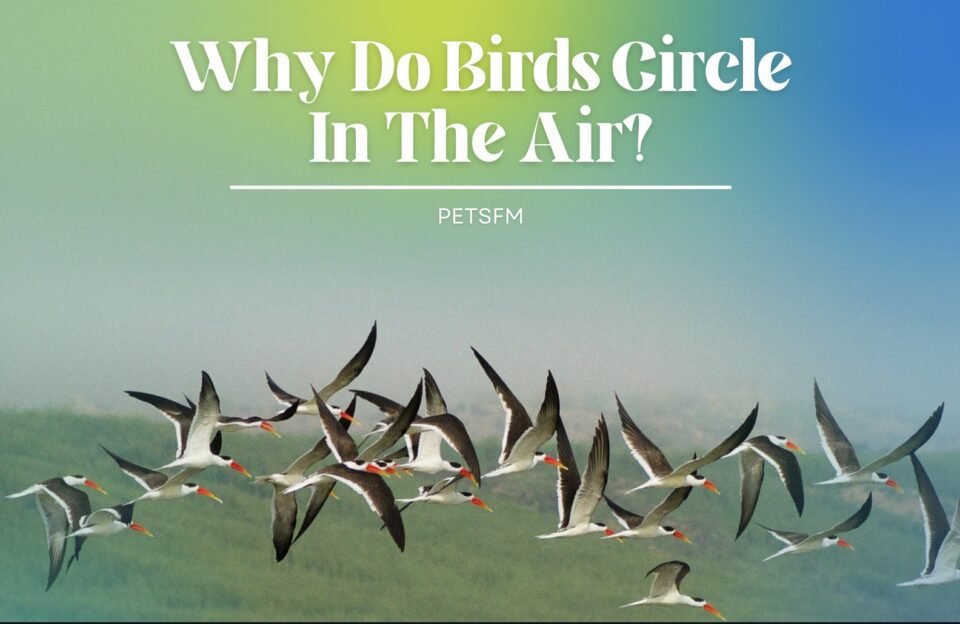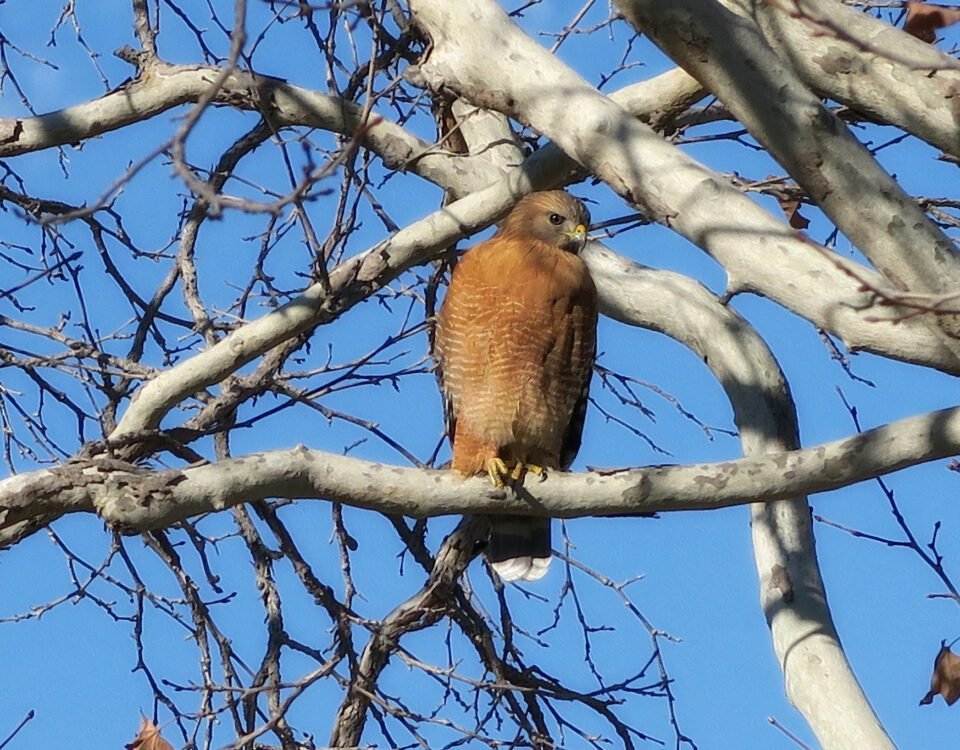


Can A Bird Die From Shock? When Should You Help One?
September 13, 2023


Why Does My Parrot Lunge At Me? Specific Parrot Species Guide
September 14, 2023If you are an avid birdwatcher or just a casual admirer of the avian world, you’ve probably noticed birds in flight, circling in the air, which can be pretty fascinating and confusing at the same time.
But have you ever wondered why do birds circle in the air? Well, you’re not alone. This article will dive into the reasons behind this complex dance, providing a deeper understanding of our friends and their tricky behaviors.
Similar Read: Why Do Birds Attack Hawks? Know The Actual Truth!
Why Do Birds Circle In The Air?
Birds are fascinating creatures that have captivated the attention of humans for centuries. One of the most intriguing behaviors exhibited by birds is their tendency to circle in the air.
Aerial circling refers to birds flying in a circular pattern in the sky. This behavior is often seen in large flocks of birds, such as migratory species or birds of prey. While it may appear chaotic or random at first glance, aerial circling follows a specific pattern and serves essential functions for the birds involved.
Related Read: Can a Bird Pop A Hot Air Balloon? Should You Be Worried?
1. Avoiding Predators
Birds may circle in the air to avoid predators or potential threats, using their aerial agility to evade capture. By spinning in the air, they can confuse and deter potential predators, making it difficult for them to predict the bird’s next move.
One reason birds use circular patterns is to create visual illusions. When a bird circles in the air, it creates a constantly changing image for the predator, making it harder for the predator to track the bird’s position and trajectory accurately.
Another advantage of circular patterns is that they allow birds to maintain a constant distance from their pursuer. By continuously circling, the bird can keep a safe space from the predator, preventing it from getting too close.
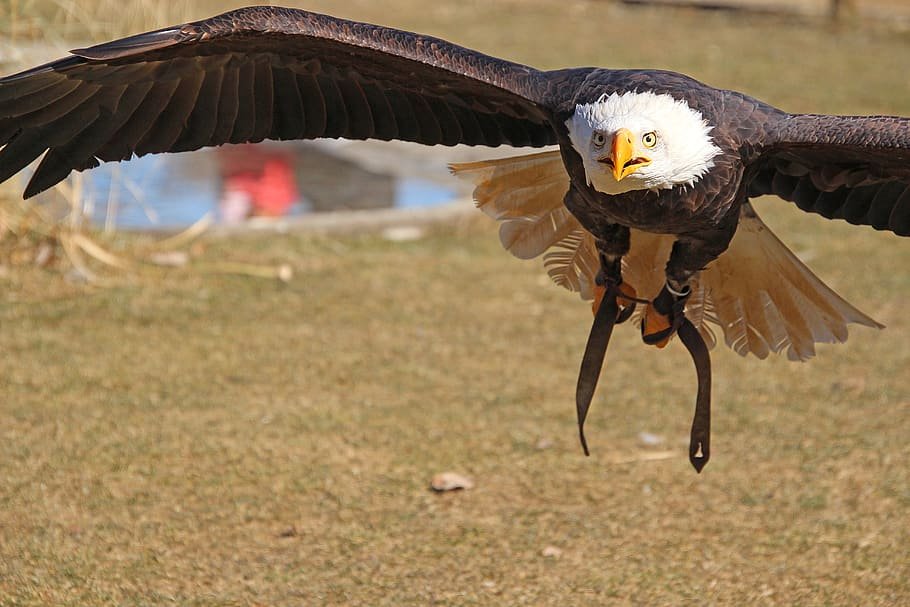

Predators
This tactic is particularly effective against predators that rely on speed or straight-line pursuit, such as the Northern Goshawk.
Circular patterns also allow birds to survey their surroundings and keep an eye on the predator. By circling, birds can maintain a 360-degree view of their environment, making detecting potential threats easier and reacting accordingly.
Birds can also use these patterns to confuse predators that rely on visual cues, including hawks, eagles, and falcons.
By rapidly changing direction and speed while circling, birds can create a chaotic and unpredictable flight path, making it challenging for the predator to anticipate the bird’s movements.
2. Utilizing Thermals
Birds maintain their stability while circling by using a technique called thermal. Thermaling involves birds taking advantage of rising columns of warm air. They circle within these thermals and gain altitude without expending much energy.
When a bird enters a thermal, it adjusts its flight pattern to maintain a constant position within the rising air column. Birds can maintain their flight for extended periods and cover long distances without flapping their wings constantly.
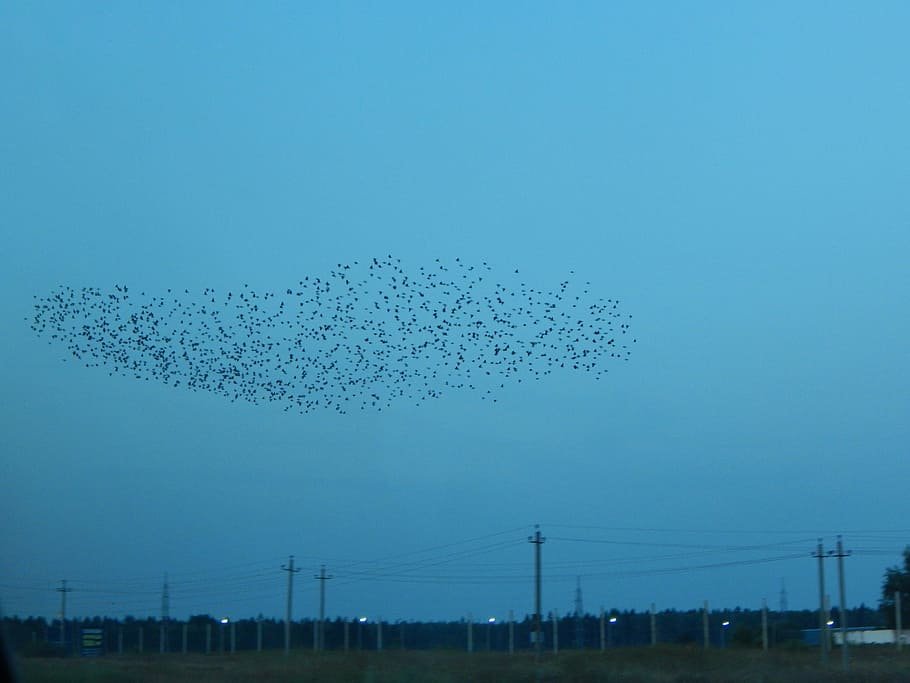

Birds in Air
As the bird reaches the top of the thermal, it glides out and searches for another thermal to enter, repeating the process to maintain altitude and cover long distances.
This behavior is particularly beneficial during migration or when searching for food over large areas.
3. Hunting Techniques
Birds often engage in circular flight while hunting to locate and capture prey advantages. This behavior is widespread among raptors, such as hawks and eagles, who rely on their exceptional vision and agility to secure their meals.
By circling in the air, these birds can survey a larger area and spot potential prey from a higher vantage point. This strategy allows them to conserve energy by minimizing unnecessary flights and increasing their chances of a successful hunt.
One common technique is aerial hunting, where birds capture prey during flight. For example, the peregrine falcon is known for its high-speed dives, reaching over 240 miles per hour to catch its prey mid-air.
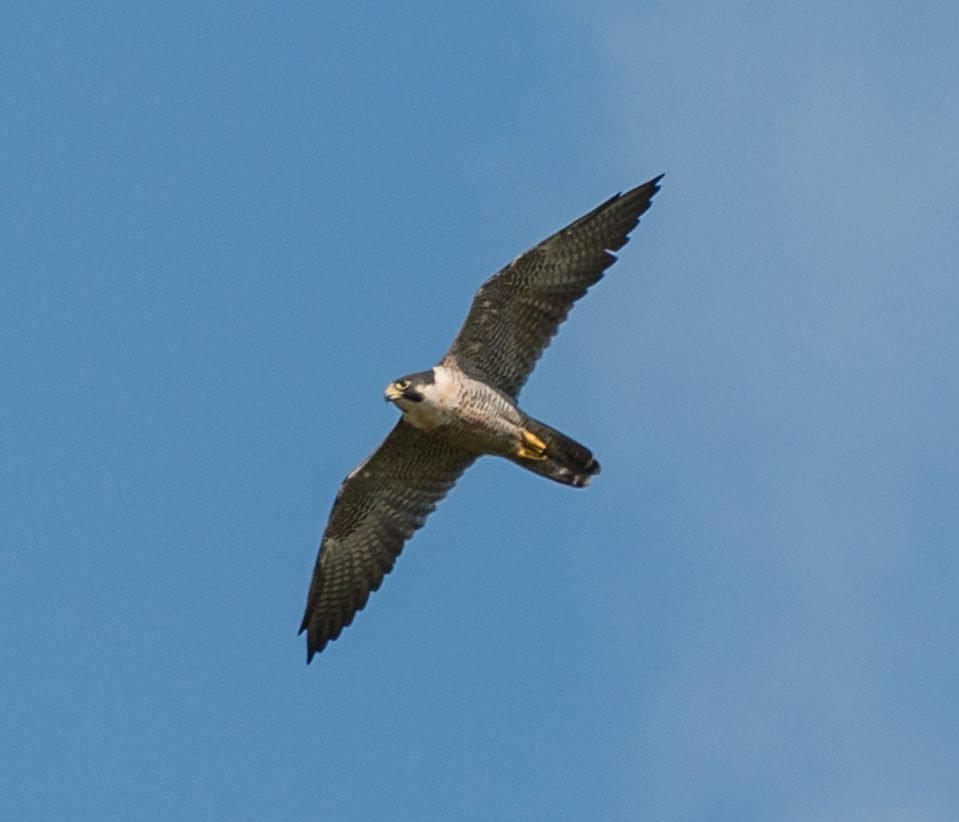

Peregrine Falcon
On the other hand, shorebirds employ a more stealthy approach, using their long bills to probe the sand or mud for hidden invertebrates.
4. Balancing Act in the air
Due to their anatomy and flight techniques, birds can maintain stability while circling in the air. One key factor is their wings, designed to provide lift and control.
The shape of bird wings, with a curved upper surface and a flatter lower surface, creates a pressure difference that generates lift. This lift helps birds stay airborne and maintain stability while circling.
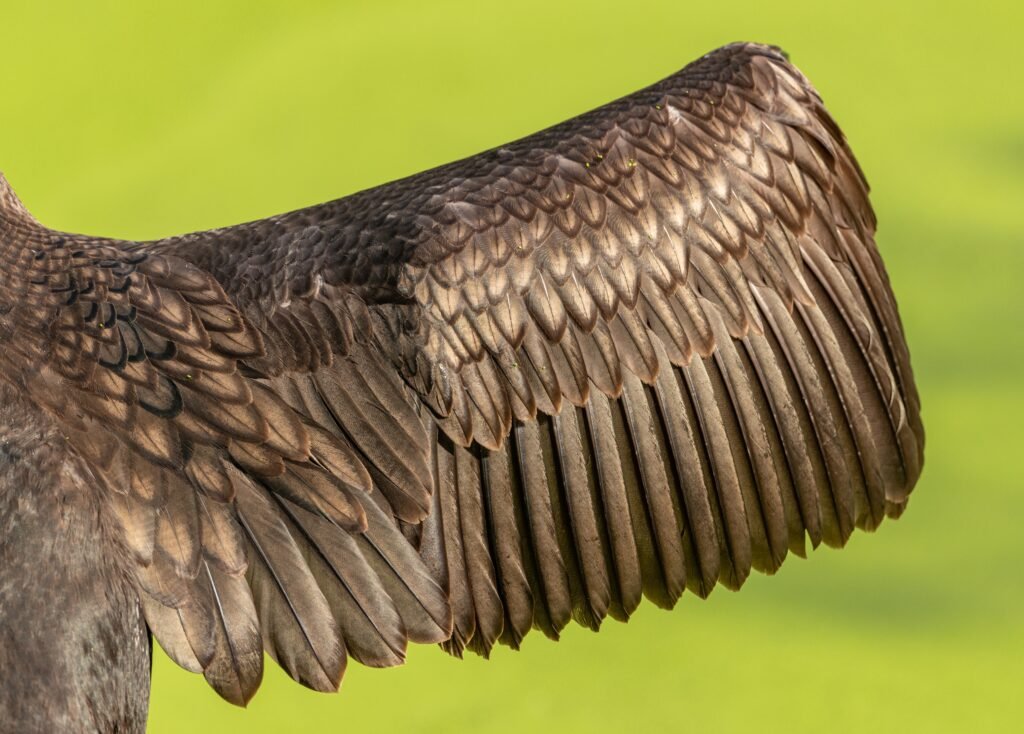

Birds Wings Closeup
In addition to their wing design, birds use various flight techniques to maintain circling stability. One such technique is banking, where birds tilt their bodies and wings to one side while turning.
By banking, birds can adjust their angle of attack and use the force of gravity to counterbalance the centrifugal force generated during the turn.
Editor’s Pick: Why Do Birds Have Claws? The Real Reason Why!
5. Airborne Communication
Birds use circular flight patterns as a means of communication within their flock. For example, when a flock of birds is in flight, they often maintain a V-formation. However, the birds may switch to a circular flight pattern during certain situations, such as changes in direction or when searching for food.
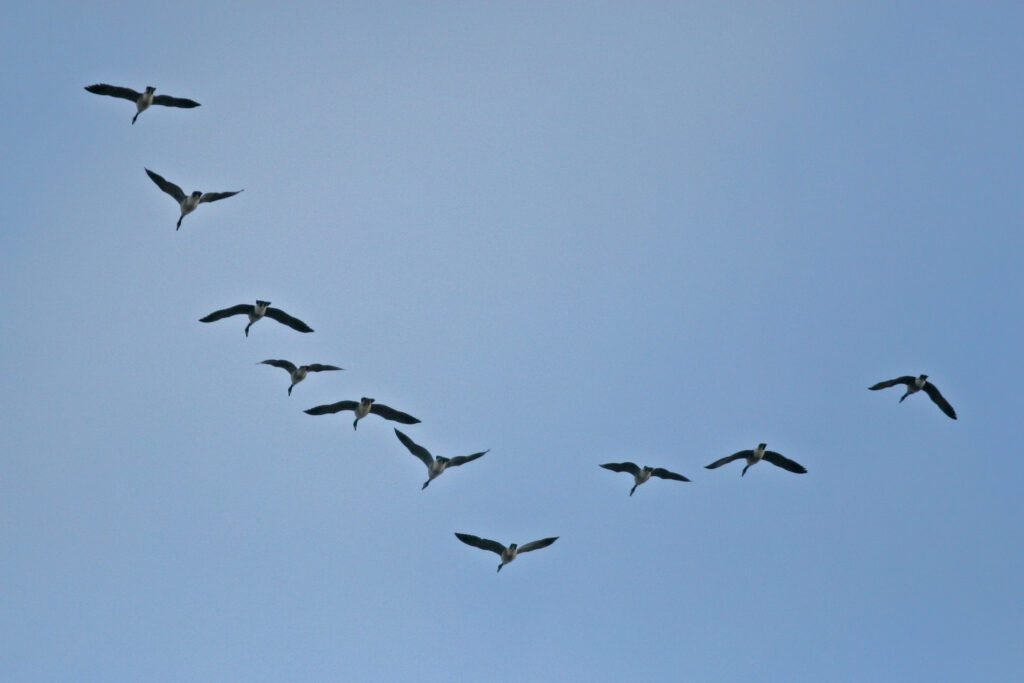

Birds V Pattern
This circular motion helps the birds coordinate their movements and maintain cohesion within the flock. It allows for efficient communication and ensures all community members know the intended direction or activity.
Birds may also circle in the air to establish and defend their territory from intruders. When a bird perceives a threat to its territory, it may engage in aerial mobbing. This involves multiple birds, often from the same species, flying in circles around the intruder.
Sky-dancing or aerial courtship displays are one specific territorial behavior involving circular flight patterns. This behavior is commonly observed in birds of prey such as the Northern Harrier.
During courtship, the male bird performs an elaborate aerial display, which includes flying in extensive circles and performing acrobatic maneuvers. This display not only attracts the attention of potential mates but also serves as a territorial display, indicating to other male birds that this area is already claimed.
The circular flight warns the intruder, indicating that the territory is already claimed and defended. By circling the intruder, the birds are visually intimidating and effectively communicate their unity and determination to protect their environment.
6. Attracting a Mate
Some bird species circle in the air as part of their courtship displays, showcasing their agility and fitness to potential mates. These displays are often seen during the breeding season and are performed by male birds to impress females.
The circular flight display involves the male bird flying in a circular pattern, often high in the sky, while making various aerial maneuvers.
The circular flight display is visually appealing and serves as a form of communication between the male and female birds. The male bird’s flight patterns and maneuvers can convey important information about his health, vigor, and genetic quality.


Birds Attracting a Mate
In addition to showcasing their physical abilities, birds use circular flight displays to demonstrate their commitment and dedication to the potential mate. The male bird invests significant energy and time into performing these displays, which can be physically demanding.
For instance, the magnificent Red-crowned Crane engages in an elaborate circular dance during courtship.
The male and female cranes face each other and begin to leap and flap their wings, gradually moving in a circular motion. This synchronized display demonstrates their physical abilities and strengthens the bond between the pair.
7. Indicating Changes in the Environment
When birds circle in the air, it is often a sign that something has caught their attention or that they are actively searching for something. By observing their flight patterns, birdwatchers and researchers can gain valuable insights into the state of the environment and the presence of specific resources or threats.


Changes in Environment
Birds’ circular flight can also respond to environmental changes, such as disturbances in the background. Birds have evolved this behavior as a survival strategy to stay alert and react quickly to potential threats or changes in their surroundings.
8. Navigating Obstacles
To avoid collisions, birds adapt to circular flight through instinct, anatomy, and communication.
One essential adaptation is their ability to quickly change direction and altitude, allowing them to navigate around obstacles or other birds in their flight path.
By circling in the air, birds can maintain a safe distance from potential collisions and adjust their flight path as needed.


Birds Navigating Obstacles
Another way birds avoid collisions during circular flight is through visual communication. Many bird species have well-developed eyesight, allowing them to perceive the movement and position of other birds in their vicinity.
In addition to visual communication, birds rely on auditory signals to avoid collisions. Some bird species produce distinct vocalizations during flight, which serve as warning calls or signs to maintain spacing. These calls can alert nearby birds to their presence and help establish a safe distance between individuals.
These intelligent creatures have also evolved a keen spatial awareness, allowing them to judge distances and anticipate potential collisions accurately. Their well-developed brains and specialized sensory organs, such as the eyes and inner ears, enhance this ability.
Must Read: How Do Birds Clean Themselves – Understanding Avian Hygiene
Bird Species that engage in this behavior
Understanding the circling flight habits of various bird species can help us appreciate their complex behaviors and unique survival strategies.
To aid in this comprehension, the table below examines the purpose of circling flights of some bird species:
| Bird Species | Purpose of Circling Flights |
|---|---|
| Soaring Raptors | Efficiently ride the air currents, optimizing their flight efficiency. |
| Vultures | Locate carrion, communicate with each other about the location of potential food sources, and cover large territories efficiently. |
| Seabirds (Albatrosses and Gulls) | Take advantage of wind patterns and air currents to glide effortlessly and cover long distances. This is particularly important for long-distance migrations and searching for food or suitable breeding grounds. |
| Smaller Birds (Swallows, Swifts) | Use circling as a way to catch insects in mid-air. By circling a specific area, they can spot and target their prey more effectively, especially during the breeding season. |
The behavior of circling in the air is observed in a wide range of bird species, each with its unique reasons. Circling allows birds to take advantage of air currents and optimize their flight efficiency, whether for hunting, scavenging, long-distance travel, or capturing prey.
Why do Birds Fly in Circles Before a Storm
Birds are complex creatures, and instinct, environmental cues, and individual variation influence their behavior.
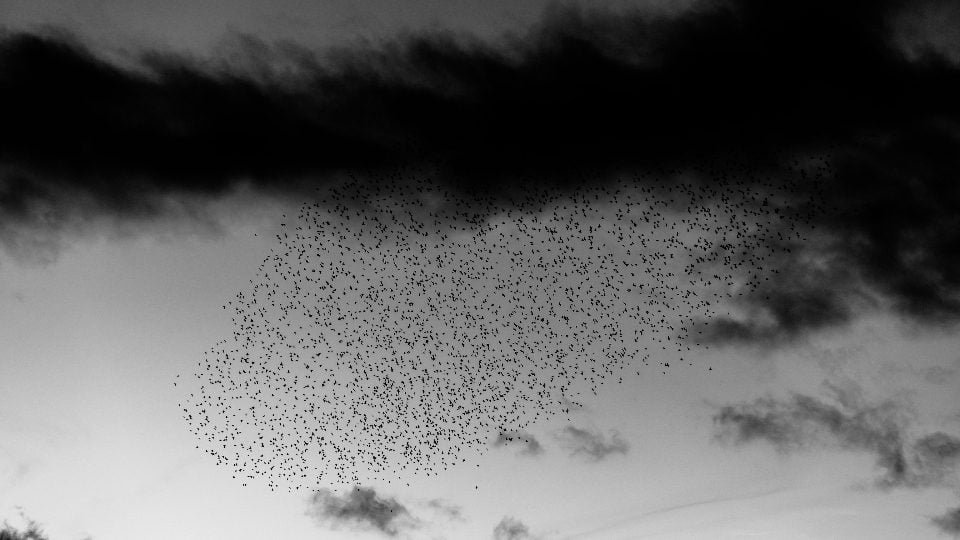

Birds before storm
- One theory suggests birds fly in circles before a storm to take advantage of the updrafts the approaching weather system creates. These updrafts can help birds gain altitude and conserve energy, making navigating through stormy conditions easier.
- Another theory proposes that birds can stay together by flying in a circular pattern and maintaining visual contact, which is crucial for their safety and survival during a storm.
- Birds can also fly in circles before a storm as a defensive strategy. Flying in a circular pattern allows them to watch the approaching storm and assess its intensity.
- Some researchers believe that birds fly in circles before a storm as a means of foraging. Stormy weather often brings strong winds and turbulence, which can stir up insects and other small prey.
Despite these theories, it is essential to note that the exact reason why birds fly in circles before a storm is still uncertain.
Environmental Factors that Influence Bird Circling
Birds circle in the air for various reasons, and environmental factors significantly influence this behavior.
A significant environmental factor that influences bird circling is wind patterns. Birds often circle in areas with favorable wind currents, such as along coastlines or mountain ridges. These areas can create updrafts rising air currents caused by wind interaction with the terrain.


Environmental Factors that Influence Bird Circling
By circling within these updrafts, birds can effectively ride the air currents and conserve energy while maintaining flight.
Social behavior can also influence bird circling. Certain bird species, like starlings and swallows, form large flocks and engage in synchronized aerial displays known as murmurations. The birds circle and swoop in intricate patterns during these displays, creating mesmerizing visual spectacles.
The exact reasons for this behavior are not fully understood, but it is believed to serve purposes such as predator avoidance, mating displays, or information sharing within the flock.
Also Read: Why Do Birds Walk Funny? Different Types of Bird Walk
Conclusion
The behavior of birds circling in the air is not random or without purpose. It’s a manifestation of the bird’s survival strategy, a visual display of its communication, or simply an attempt to balance in the air. As we continue exploring the wonders of the avian world, let’s stay open to the lessons they teach us about adaptation, communication, and survival. After all, there’s more to bird behavior than meets the eye.
